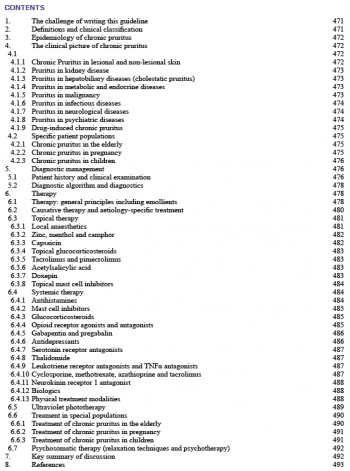Elke Weisshaar, Jacek C. Szepietowski, Florence J. Dalgard, Simone Garcovich, Uwe Gieler, Ana M. Giménez-Arnau, Julien Lambert, Tabi Leslie, Thomas Mettang, Laurent Misery, Ekin Şavk, Markus Streit, Erwin Tschachler, Erwin Tschachler, Joanna Wallengren, Sonja Ständer
DOI: 10.2340/00015555-3164
Abstract

Pruritus is a frequent symptom in medicine. Population-based studies show that every 5th person in the general population has suffered from chronic pruritus at least once in the lifetime with a 12-month incidence of 7%. In patient populations its frequency is much higher depending on the underlying cause, ranging from around 25% in haemodialysis patients to 100% in skin diseases such as urticaria and atopic dermatitis (AD). Pruritus may be the result of a dermatological or non-dermatological disease. Especially in non-diseased skin it may be caused by systemic, neurological or psychiatric diseases, as well as being a side effect of medications. In a number of cases chronic pruritus may be of multifactorial origin. Pruritus needs a precise diagnostic work-up. Management of chronic pruritus comprises treatment of the underlying disease and topical treatment modalities, including symptomatic antipruritic treatment, ultraviolet phototherapy and systemic treatment. Treating chronic pruritus needs to be targeted, multimodal and performed in a step-wise procedure requiring an interdisciplinary approach. We present the updated and consensus based (S2k) European guideline on chronic pruritus by a team of European pruritus experts from different disciplines. This version is an updated version of the guideline that was published in 2012 and updated in 2014 (www.euroderm.org).





